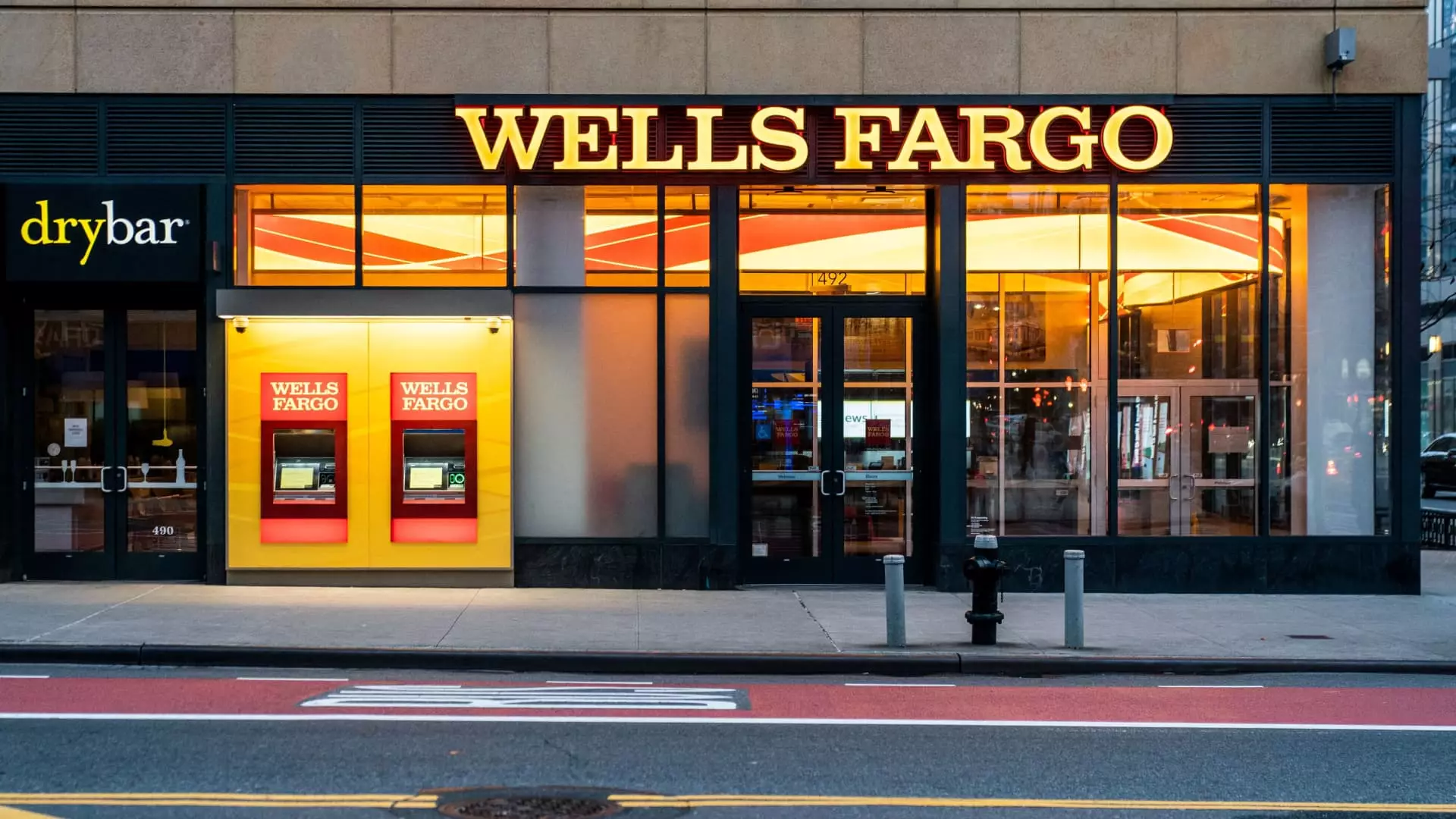In an unexpected downturn, Wells Fargo recently reported quarterly revenue that fell short of analysts’ predictions, sending the bank’s shares down by 1% on Friday. The forecasted revenue was projected to be around $20.75 billion, but the actual figure came in at a disappointing $20.15 billion. This discrepancy highlights the growing challenges banks face in a rapidly changing economic environment. While the decline in net interest income by 6% to $11.50 billion is alarming, it underscores a more systemic issue: in an era where consumers are increasingly cautious, the fundamental model of traditional banking is being tested.
Mixed Signals in Earnings and Noninterest Income
Wells Fargo’s adjusted earnings per share displayed a silver lining at $1.33, slightly beating the expected $1.24. However, this is but a veneer over the deeper and more serious financial cracks that are beginning to show. The increase in net income to $4.89 billion, representing a 6% rise from the previous year, is not as reassuring as it seems when considering the broader context. Revenue has actually declined 3% year-over-year, marking a worrying trend for a bank that once held its ground as an industry leader.
Furthermore, the noninterest income, which grew marginally to $8.65 billion, raises questions about sustainability. The investment banking fees and brokerage commissions that buoyed these numbers could be indicative of a volatile market, where such revenues may not hold steady in the coming quarters. It’s a classic case of looking good on paper while the underlying business strategy remains shaky.
CEO Commentary: Diplomatic Jargon or Real Insight?
CEO Charlie Scharf attempted to provide a reassuring narrative amid the challenging results, citing uncertainty about economic conditions tied to the previous administration’s trade policies. While his push for a resolution that favors U.S. interests seems optimistic, it reads more like a disclaimer than a forward-thinking strategy. He mentions, “We expect continued volatility and uncertainty and are prepared for a slower economic environment in 2025.” Such statements reflect an organization bracing for impact rather than actively steering towards growth.
It’s critical to recognize that though Wells Fargo has initiated share buybacks worth $3.5 billion, this move often serves as a short-term fix rather than a long-term solution. It is a tactic that may provide temporary comfort to investors but fails to address the root of the declining revenues and net interest income.
Looking Ahead: A Question of Confidence
In the end, Wells Fargo exemplifies a financial institution caught in a complex web of external pressures and internal challenges. While there are glimmers of hope, such as marginal gains in adjusted earnings and noninterest income, the broader picture is one of volatility and uncertainty. Investors pondering their next move must be wary of the bank’s ongoing struggles, particularly as concrete outcomes from the ever-political landscape remain uncertain. With the stakes this high, the coming quarters may very well determine whether Wells Fargo can reclaim its status or continue to stumble along an uncertain path.

Leave a Reply